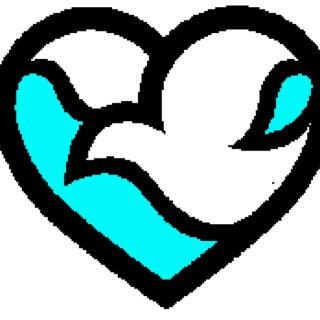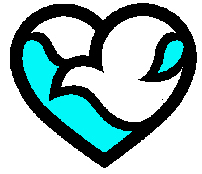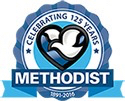Information
-
Document No.
-
Audit Title
-
Client / Site
-
Conducted on
-
Prepared by
-
Location
-
Personnel
Previous Inspection
-
Has the last inspection been reviewed?
-
Have all outstanding actions/issues been completed from the previous audit?
Emergency Preparedness
-
EM 1: Is staff able to locate the disaster, SDS and policy manuals?<br>*All manuals contain current information.
-
EM 2: Is the Emergency Manual available?
-
EM 3: Can the staff locate the medical zone shutoff valves?
General Safety
-
GS 1: GENERAL AREA:<br>1. Temperature Comfortable?<br>2. Areas free from odors?<br>3. Noise levels is acceptable/adequately controlled?<br>4. Ventilation is adequate?<br>5. Stair treads and handrails present, safe & secured?
-
GS 2: No items stored under sinks that can absorb moisture?
-
GS 3: No broken/damaged/unused equipment or furniture stored on the patient care units?<br> Coverings are intact - no rips or repairs needed?
-
GS 4: Are all electrical appliances (coffee makers, microwaves, radios, etc.) properly wired (3 prong/UL) & appear to be in good working condition?
-
GS 5: Potential Safety Hazards: <br> 1. Housekeeping & Maintenance carts & buckets are attended and lock?<br> 2. ALL FLUIDS ARE LABELED?
-
GS 6: LADDERS<br> 1. Are all ladders industrial strength (Non Household rated, check label)? <br> 2. Are ladders in good condition?<br> 3. Are ladders non conductive (Fiber glass)?<br>
-
GS 7: Are entry & walkways kept clear?
-
GS 8: Are parking lots properly maintained to provide a safe driving & walking area?
-
GS 9: Is handicapped parking available?
-
GS 10: Are docks, ramps & stairways in good repair and properly lighted?
-
GS 11: Are floor surfaces even & uncluttered, free of cracks, holes & tipping hazards?
-
GS 12: Is the floor clean & well maintained?
-
GS 13: Are non-slip surfaces provided?
-
GS 14: Is the use of extension cords prohibited?
-
GS 15: Laundry chute accesses are latched?
-
GS 16: Hazardous rooms are locked: EVS closets, supply closets, mechanical/electrical rooms & electrical panels?
-
GS 17: Are utility rooms in good order?
-
GS 18: Is waste managed appropriately?
-
GS 19: Are oily rags and combustible refuse in covered metal containers (Shops)?
-
GS 20: Are needles, syringes, sharps & glass disposed of properly?
-
GS 21: Is there a 44 inch clearance in corridors (Business Occupancies)?
-
GS 22: Is 36" clearance maintained around electrical panels?
-
GS 23: Are sterile supplies & soiled equipment stored seperately?<br>
-
GS 24: Refrigerators: Contain only those items designed for the refrigerator (specimen, medications or patient/employee food)?
-
GS 25: Are blanket warmers set to maintain temperature of 130 degrees?
-
GS 26: Electrical Safety<br> 1. Use of hospital grade power strips, plugs & receptacles in good condition?<br> 2. Wires neat and controlled with no trip hazards?
-
GS 27: Outer shipping carton boxes are empty & removed as soon as possible?
-
GS 28: Is equipment properly stored when not in use?
-
GS 29: Caution X-Ray signs are posted?
-
GS 30: Are all MRI Safety Zones posted?
-
GS 31: Are pregnancy warning signs posted?
-
GS 32: There are no other abnormalities or infractions?
HAZ
-
HAZ 1: Does staff know RIN (Recognize, Identify, Notify) with a spill?
-
HAZ 2: If required is PPE available?
-
HAZ 3: Is adequate ventilation provided?
-
HAZ 4: Is chemical signage appropriately displayed?
-
HAZ 5: Are hazardous chemicals and flammable agents labeled and stored properly?
-
HAZ 6: Are gas cylinders stored appropiately?
-
HAZ 7: Is the HMI (Hazardous Material Inventory) current (Sample one product)? Online?
-
HAZ 8: Can the staff locate the HMI?
-
HAZ 9: No hazardous chemicals /materials stored over shoulder high or where it can be knocked over?
-
HAZ 10: Are cleaning products & chemicals stored properly & away from food and clinical supplies?
-
HAZ 11: Are emergency eye washes & safety showers tested routinely and the inspection tags are present and up to date?
-
HAZ 12: Are eye washes & showers easily accessed?
-
HAZ 13: Are all containers properly marked, labeled & safe? Housekeeping carts?
-
HAZ 14: Are Hazardous Materials Disposed of properly?
-
HAZ 15: Are all portable tanks securely mounted?
-
HAZ 16: Is there inadequate spill containment (Eng., EVS., Shops, Etc.)?
-
HAZ 17: Are all flammable liquids kept in approved containers?
-
HAZ 18: Is there excessive quantities stored on site?
Life Safety
-
LS 1: Is the fire alarm system functioning (look for in-terminate lights) correctly?
-
LS 2: Nothing stored on top of flammable cabinets? Not more than 3 flammable storage cabinets may be present in a single storage area?
-
LS 3: Appropriate storage of boxes and patient care items:<br> 1. Not directly on floor<br> 2. 18" clearance from ceiling<br> 3. Boxes stored on shelves close to floor must have solid bottom and high enough to not incur water damage from mopping<br> 4. Volume of combustible material is not stored in large quantity as top create a fire hazard
-
LS 4: Oxygen or other combustible compressed gas cylinders are stored properly:<br> 1. Secured in floor stand, carrier or secured to the wall by a mount (not laying on the floor or against the wall).<br> 2. Labeled and separated, full from empty.
-
LS 5: Fire exits and hallways are cleared:<br> 1. Egress corridors must have 8' clearance.<br> 2. Equipment in corridors must be in use within 30 minutes to remain in corridor.
-
LS 6: Are fire hydrants and standpipes accessible?
-
LS 7: Fire alarm pull stations, fire extinguishers, medical gas shutoff valves and electrical panels are not blocked?
-
LS 8: Fire extinguishers have been inspected monthy?
-
LS 9: Are fire extinguishers proper size and type (Surgery,. MRI., Food Service, IT., etc.)?
-
LS 10: Maximum of 2-32 gallon trash cans in a 10x10 room (unless fire rated)?
-
LS 11: Are "EXIT" doors unlocked or equipped with "panic bars"?
-
LS 12: Are fire doors kept closed or magnetically held open?
-
LS 13: Fire doors are not blocked, wedged or propped and when closed is positive latching?
-
LS 14: Are fire doors free of damage and do they close properly?
-
LS 15: Is 20% rule being violated? No combustibles on fire rated doors and walls?
-
LS 16: Exit signs are illuminated and readily visible/undamaged?
-
LS 17: Are all sprinkler heads clean, in good shape and escutcheons tight/in place?
-
LS 18: Ceiling tiles are in place, no cracks, holes, misaligned or visible stains?
-
LS 19: Is space being utilized appropriately?
-
LS 20: Is staff lounge guidelines being followed?
-
LS 21: Are stairways free of storage?
-
LS 22: Floors, ceilings, walls and other surfaces intact and free from holes, damage and soiling?
Medical Equipment
-
ME 1: Are bio-medical equipment stickers on patient equipment current?
Security
-
SEC 1: Everyone has ID badges and visible?
-
SEC 2: Are valuables secured (purses, expensive equipment, etc.)?
-
SEC 3: Does the area appear to be safe and secure?
Utilities Management
-
UM 1: Are switch plates & outlets covered?
-
UM 2: Are all electrical cords, plugs and switches in good order?
-
UM 3: Are Medical Gas Valve accessible, labeled & clean?
-
UM 4: Is electrical equipment equipped with ground wire?
-
UM 5: No power leads or cords across walkways?
Exteriors
-
EX 1: No damage, uneven surfaces, surface quility?
-
EX 2: Surface differences more the 1/2" accross?
-
EX 3: Are cracks greater than 1/2" accross?
-
EX 4: Are manholes and vault covers secure?
-
EX 5: Is the vehicles barriers undamaged and properly placed?
-
EX 6: Are the walkways clear, unobstructed by bushes etc.?
Information Management
-
IM 1: Confidential Patient Information: Cannot be overhead or seen by unauthorized persons:<br> 1. Computer terminals signed off when not in use.<br> 2. Patient information is not discussed in public areas.<br> 3. No patient information visible to unauthorized persons.
-
IM 2: No clipboards displayed as sign-in sheets when multiple patient names on the list?
-
IM 3: If fax machine is in public area, patient information is quickly removed.
Infection Prevention
-
IP 1: Food and drink in designated areas: no employee food of drinks in the public/patient areas, should be limited to private offices or break rooms.
-
IP 2: Hand hygiene products:<br> 1. No empty alcohol gel bottles<br> 2. No empty soap or paper towels<br> 3. Hospital approved products being use
-
IP 3: PPE:<br> 1. Readily available<br> 2. Clearly marked<br> 3. Worn correctly
-
IP 4: Biohazard waste:<br> 1. Discard in Red Bags with a biohazard symbol<br> 2. Not overfilled<br> 3. Covered containers<br> 4. Contains only biohazards waste, no trash<br> 5. Stored in a secure area
-
IP 5: Soiled Linen: Properly stored in closed container and not overfilled.
-
IP 6: Linen and Linen Carts:<br> 1. Covered and carts have solid bottoms.<br> 2. Pillows are cleaned and bagged for storage or considered dirty, to be cleaned prior to use.<br> 3. If dirty not stored with clean linens.
-
IP 7: Sharps Waste:<br> 1. Placed in punctured resistant sharps container with lid.<br> 2. Disposed of when 3/4 full or "full" indicator.<br> 3. Mounted appropriately.<br> 4. Stored in secure location.
-
IP 8: General Cleanliness:<br> 1. Observe surfaces for high dust & residue, floors, stairwells, nutritional area, med prep areas, lobby, exam rooms, bathrooms, equipment, decorative items, curtains, blinds or drapes.<br> 2. No blood or bodily fluids.<br> 3. Staff using hospital approved cleaning products according to manufacturer's recommendations.
-
IP 9: Air vents: Clean
-
IP 10: Coverings are clean and intact on exam tables, phlebotomy chairs, chairs in waiting areas and exam rooms - no rips or repairs needed. Coverings can be cleaned/disinfected with hospital approved product.
Notes and Comments
-
Report conclusion including any other recommendations.
Sign Off
-
Your signature or reply (email) acknowledgement when the recommended corrective actions are completed.
-
Auditors Signature
-
Required








